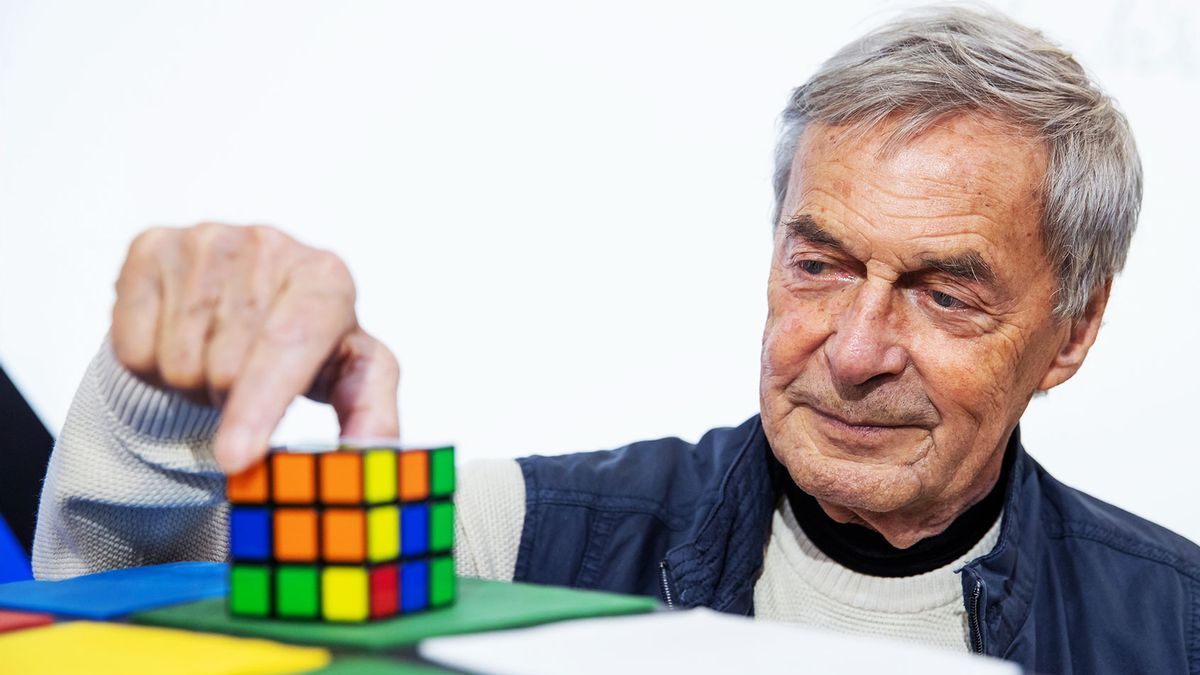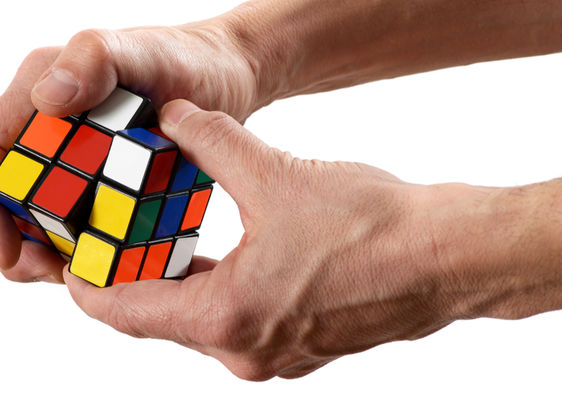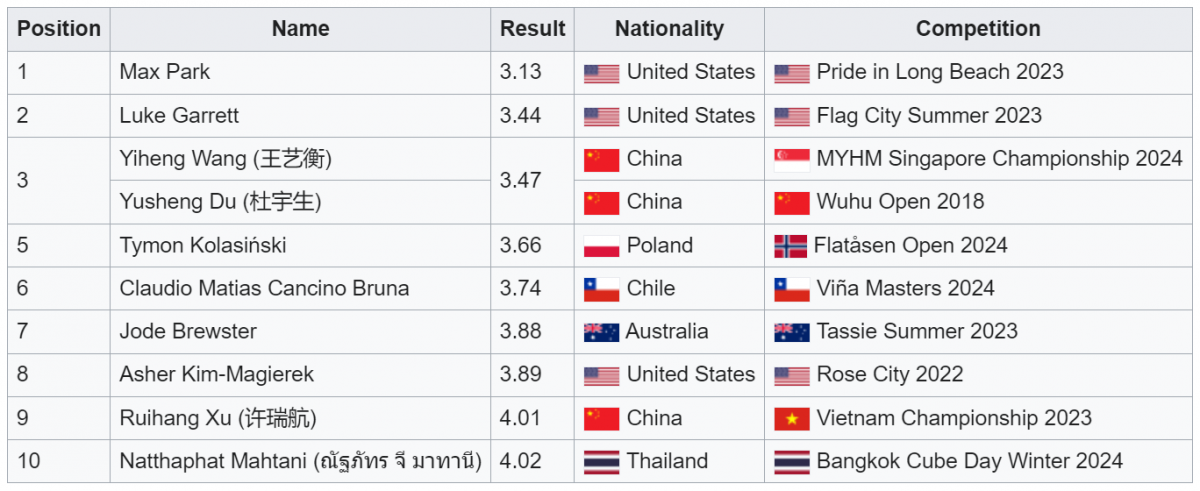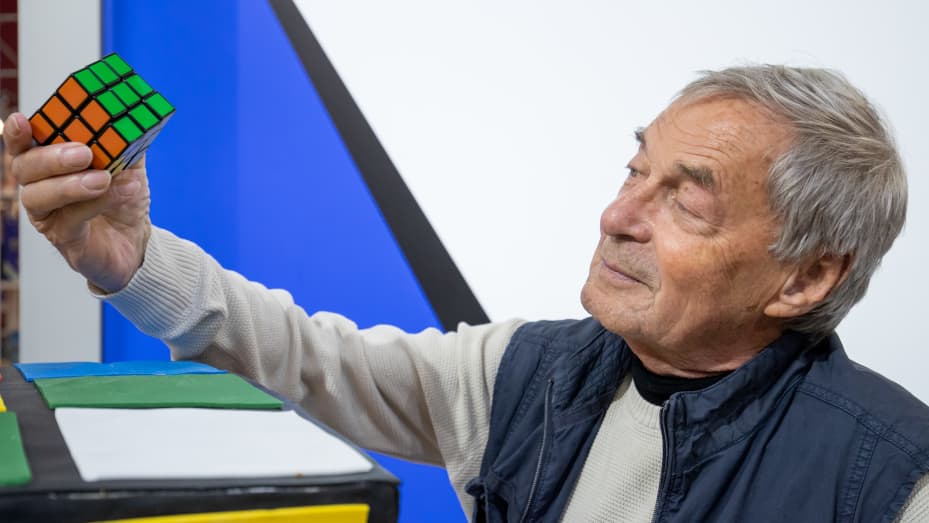How do you even begin to deal with a 3D puzzle that has over 43 quintillion configurations? Just ask anyone who grew up in the ’80s!
Critics once doubted the longevity of Ernő Rubik’s multicoloured cube, predicting it wouldn’t last beyond the 1980s. However, millennials and Gen Z are just as captivated by the Rubik’s Cube as previous generations. This amuses its 79-year-old creator, who shared his thoughts recently in a rare interview with AFP.
In today’s digital age, Rubik observes that “we are slowly forgetting that we have hands.” He believes that manipulating the cube reconnects us with the fundamental act of using our hands, which he describes as “our first tools.”
/https://tf-cmsv2-smithsonianmag-media.s3.amazonaws.com/filer/8d/1c/8d1cc7cc-4e7a-48fd-ba01-c6a30f273e3a/gettyimages-153408104.jpg)
The phenomenon of ‘speed cubing’ and various Rubik’s Cube hacks have exploded on social media. Young people frequently go viral by solving the puzzle while dancing, rapping, or even playing the piano. According to Rubik, the cube fosters a crucial “connection between the mind and hands,” which has significantly contributed to human development.
“I think probably the cube reminds us we have hands… You are not just thinking, you are doing something. It’s a piece of art you are emotionally involved with,” Rubik added.
Rubik, a modest Hungarian architecture professor, never anticipated that his prototype would become a global sensation and secure his financial future. Over 500 million cubes have been sold, excluding a veritable tsunami of counterfeits.
The Rubik’s Cube remains the world’s best-selling puzzle game (and also the best-selling toy) of all time, offering over 43 quintillion – a quintillion being a billion trillion – combinations for solving it.
What does that number even look like? Here it is, precisely:
43,252,003,274,489,856,000
It’s an almost nonsensical figure. If you were to try one Rubik’s Cube configuration every second, it would still take you over 1.37 trillion years to go through all of them, which is more than 100 times the current age of the universe (approximately 13.8 billion years).
Even using rudimentary real world examples, like the number of grains of sand on every beach on Earth (estimated at around 7.5 quintillion, since you asked), it’s still nearly impossible to grasp how staggeringly large a number 43 quintillion is. It’s just one of those numbers that, although real, is so absurdly vast, it goes beyond ordinary human experience and comprehension.

A CUBE FOR ALL TIMES
Rubik is enthusiastic about the cube’s enduring appeal, stating that even after “hundreds or thousands of years,” new solutions would still be discovered. Despite the dominance of digital screens, “new generations have developed the same strong relationship with the cube,” Rubik noted at Budapest’s Aquincum Institute of Technology, where he occasionally lectures.
Rubik created the first working prototype in the spring of 1974, assembling small wooden blocks with a unique mechanism. Reflecting on the past five decades, he described his experience as “unbelievable,” likening his bond with the cube to having a “wunderkind” in the family. “You need to take a step back because of your ‘child’ and its fame… (which) can be very tiring,” he said.

In his 2020 book Cubed, Rubik disclosed that his goal was never to make a lasting impact; he was simply passionate about building geometric models. It took numerous prototypes and weeks of experimentation before he perfected the mechanism and solved the puzzle, allowing him to file for a patent in 1975.
A CULTURAL TOUCHSTONE
The vibrant “Magic Cube” was initially sold in Hungary in 1977 before gaining international acclaim three years later. And from there, it quickly became a fad that never died. If you are a child of the ’80s, you know well that the Rubik’s Cube is one of the most enduring, iconic emblems of that decade.
Rubik fondly remembered his first trip from communist Hungary to the Western world, beyond the Iron Curtain. Despite his aversion to publicity, Rubik has collected about 1,500 magazine covers featuring his cube, which has become “a symbol of complexity” used to illustrate everything from geopolitical issues to elections.

“You either like or hate it,” Rubik commented, “but you cannot ignore it.” The Rubik’s Cube has a prominent place in pop culture, appearing in numerous TV shows and Hollywood films, and remains central to puzzle-solving competitions. Enthusiasts gather worldwide, solving the cube under various challenging conditions, such as blindfolded, while parachuting, or doing headstands.
The cube is exhibited at New York’s Museum of Modern Art and has inspired artists, including the famed French street artist Invader. As an educational tool, it is used from nursery schools to universities and is popular in retirement homes. It also aids individuals with autism, like American speed-cubing champion Max Park, who set the world record by solving it in 3.13 seconds.

Rubik values the emotional rewards the cube has brought him even more than the financial benefits, saying he takes pride in having done “something good for people.”
For this article, the original interview from Agence France-Presse was condensed and edited for clarity and flow. Information from Wikipedia and CNBC was also used.
"ExpatGo welcomes and encourages comments, input, and divergent opinions. However, we kindly request that you use suitable language in your comments, and refrain from any sort of personal attack, hate speech, or disparaging rhetoric. Comments not in line with this are subject to removal from the site. "



















